The premise is simple: read one comic every day for the entire year. It seems like a simple task but there is no way that I read 365 comics last year, even if you count the individual issues in collections. So, this year, I am committing myself to this reading challenge, in the hope that I can broaden my reading habits and fully engage with my favorite hobby again.
No big introduction this week. No concept or overarching theme. I’ve just picked up a collection of comics to pass the time.
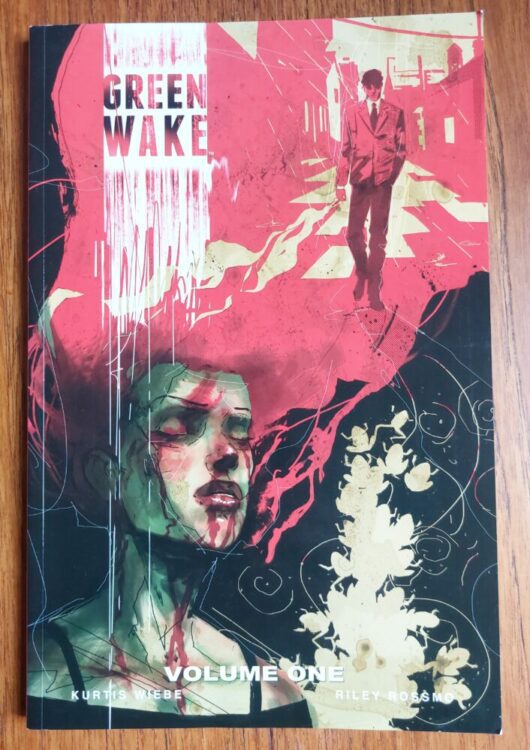
Comic Number 92: Green Wake #1
Written by Kurtis Wiebe (of controversial Rat Queens fame), drawn and colored by Riley Rossmo (of numerous DC titles including the wonderful Constantine: The Hellblazer), and lettered by Kelly Tindall (Show Me History), Green Wake is a mystery set in an alternate world. Just like the artwork, there are layers to the narrative with a murder mystery story running alongside a greater mystery: what is Green Wake?
MFR ON YOUTUBE (latest video)
Help us reach 5K Subs!
The narrative revolves around a simple premise that has been used many times before, on TV shows like Life On Mars and The Prisoner, and in comics such as Shipwreck and The Sandman. A character wakes up in a different world unsure of what is happening or what their purpose is. Green Wake adds extra layers of mystery as the central character is instantly embroiled in a murder investigation.
But, to be honest, the narrative is not the reason why I bought, or read, this comic; it was for the gorgeous artwork. Rossmo’s style is unsettling and fascinating. It is like he scratches out the images from the page, tattooing the black ink onto the watercolor pages and creating images out of uncontrollable lines. Like Ben Templesmith’s work on 30 Days of Night, Rossmo creates a world that is almost torturous for the readers to enter but then is countered by the overall aesthetic beauty. Complex scenery and emotional characters interact through color washes that spread across the page like spilled water. You can’t help but look at this comic. It wants you to stare into its depths and, hopefully, emerge with some understanding of what you’ve seen.
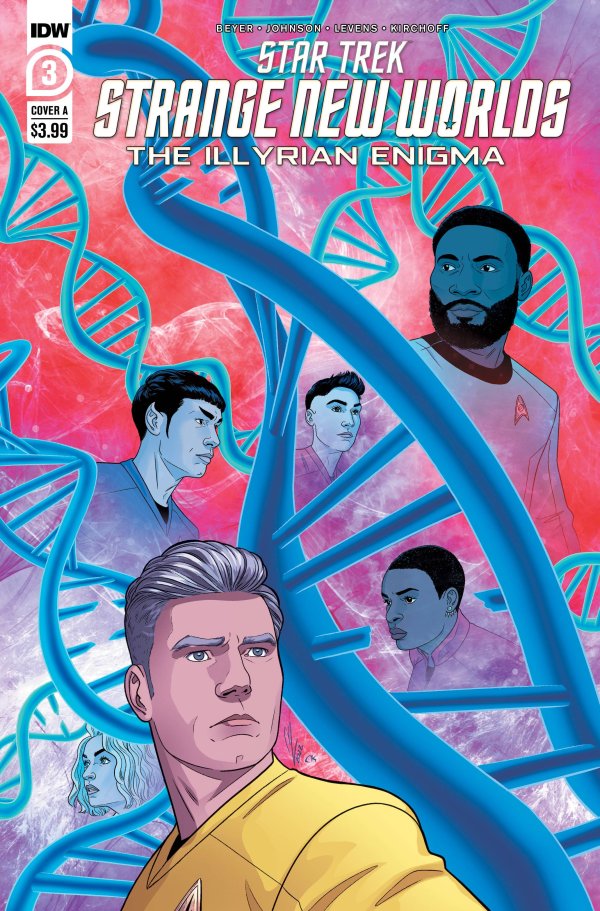
Comic Number 93: Star Trek: Strange New Worlds #3
I am trying to catch up on the Star Trek comics currently being released by IDW. I am enjoying the third series of Next Generation — excuse me, Picard, and the comic spin offs have been especially good at the moment. With a new Deep Space 9 and the fourth issue of Strange New Worlds heading for the shelves this week, today I have worked through the SNW title.
The third issue has an interesting premise with Spock, kidnapped and physically altered, entering a shrine on the Illyrian home world to discover a secret history that will, possibly, change everything he understands about Vulcan history, or threaten to destroy the universe — or both. The series has been written with a sense of high stakes baked into the fabric of the narrative and I’m not sure it’s really that necessary. Kirsten Beyer and Mike Johnson have a good grasp on the characters from the TV show, although there isn’t enough room in each issue to really capture the crew dynamic. It is entertaining and I am enjoying it. What more could you ask for?
For so long IDW seemed to have the same writers working on Star Trek, writers that I didn’t particularly get on with so I am loving the new voices coming into the franchise.
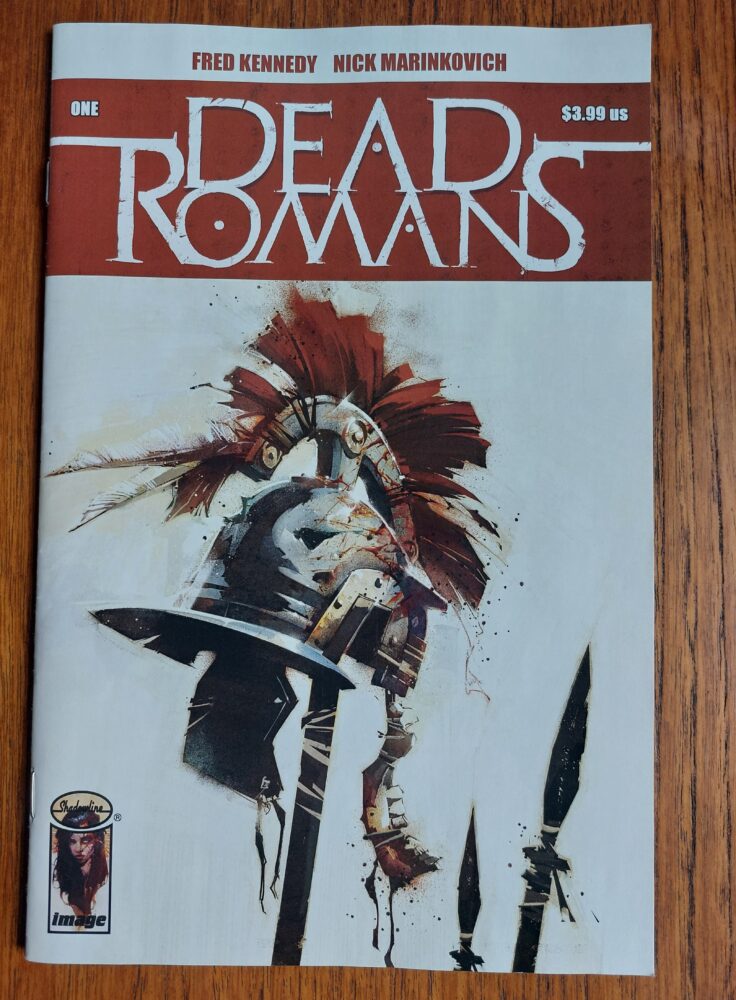
Comic Number 94: Dead Romans #1
The one thing missing from modern Doctor Who are the pure historical stories. Yes, The Doctor and his companions travel back in time a lot, but there hasn’t been a pure historical episode, with no sci-fi element (other than the Tardis and its occupants) since Black Orchid in 1982. Maybe it’s because I’m a fan of older Doctor Who that I miss this type of storytelling, but there must be room in the series somewhere for this type of story?
What has this got to do with comics? Well, I have a similar problem with modern comics, in that it isn’t easy to find comics that don’t include an element of science fiction or, because of the medium, super powers. You might find a western but it will contain supernatural horror, or a Prohibition era gangster story will come with an unhealthy dose of alien invasion. Occasionally I like these things but I also want the Victorian drama that is just about the struggles of living in an industrial city or a Roman era narrative about a difficult military campaign set in a harsh country. Enter Dead Romans written by Fred Kennedy and illustrated by Nick Marinkovich.
Set during the reign of Augustus in 36BC, Germania, betrayal and violence besieges a column of marching roman soldiers and the tribute they carry. The German tribes with their unexpected leader attack and plunder but the real goal is missed and left to the slave, Honoria, to defend.
The script is strong with a selection of well defined central characters. The plot has a classic set up with treachery, treasure, and plenty of bloody violence. But, just like Green Wake, the real star of this comic is the art. Marinkovich has a stylistic approach to storytelling and character design. Strong shapes make up the army characters, reflecting the militarization of the roman soldiers. This is then contrasted with the more natural shapes and softer definitions used for the tribes and Honoria herself. The heavy and runny ink effect used for the backgrounds and scenery produce an unstable and unsettling world for the characters to inhabit. It is difficult to feel safe anywhere in this comic.
I love the visuals and the narrative packed with intrigue. This is a perfect escapist comic for me and feeds into my fascination with history. You can guarantee I will spend the night reading about the various conflicts between the roman empire and the Germanic tribes.
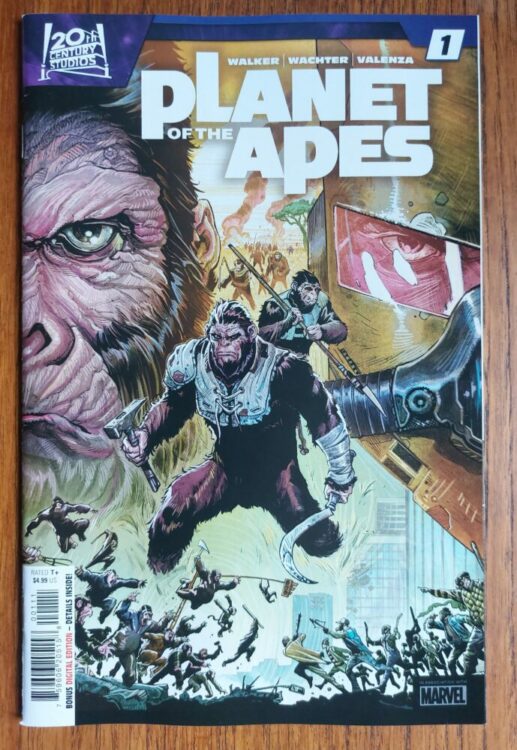
Comic Number 95: Planet of the Apes #1 (Marvel 2023)
Everything stops. A brand new Planet of the Apes comic has been released this week! It feels like years since a new Apes comic was released. I wonder if that’s because of the shift in licensing from BOOM! Studies (where the franchise has been dealt with with care and compassion) to Marvel Comics?
Marvel has a history with Planet of the Apes, having produced the first Apes-based comics. Well, not the very first. There were two Japanese adaptations in 1968 and 1971, and Gold Key Comics adapted the second film in 1970, but Marvel’s initial run is almost iconic. They produced some wonderful adaptations of the five original movies and the continuation of the story went to some outlandish places. They truly were Adventure comics with a capital A. (Marvel are re-releasing the original strips in large, omnibus style books starting with Planet of the Apes Adventures later this month)
However, over the years a number of different publishers have taken different approaches to the franchise: filling in narrative gaps, continuing the story of the original characters, and going off the rails completely. The one thing that unites them all, for me as a fan, is that they all have something to offer the Apes franchise. The only comics that I’m not particularly taken with is the main run from Adventure Publications from 1990 to 1992, and that is because I have trouble connecting to the art work. With Marvel’s new venture, they are off to a good start with the choice of writer: David F Walker, who has previous Apes experience having written BOOM! Studio’s last outing, Ursus. Dave Wachter, their chosen artist, also has comic experience working on franchise and non-franchise comics.
All in all, the opening issue is well written and has some dramatic art, especially in the recreations of scenes from the rebooted movies. But this is where, for me, the problem lies with this comic’s setting. BOOM! Studios have already released comics that tie in with the various three reboot movies, each mini-series acting as a prequel to the films. The series were entertaining and contained some great artwork but the overall narrative lacked any sense of intrigue or real drama. The trilogy of movies have a very clear, direct narrative from the creation of the virus to the war between Ape and Human. This story is told through the life of Caesar. It starts and ends with him.
This new series by Marvel is set at the time of these movies, drawing its aesthetic from the visuals on screen. The narrative is focused very heavily on the human characters, both hero, a good nature soldier, and villain, an anti-ape terrorist organization. The Apes of this world feature as plot points to aid the development of the humans instead of being central to the plot. I expect this to change over time but it does raise a problem with setting the story at this point in the franchise history: the majority of the Apes can’t speak and are only just beginning to gain intelligence. Caesar was the driving force behind the ape characters and the one ape that held the narrative together. Unless the comic is going to jump an evolutionary stage and introduce other talking, intelligent apes outside of the world created by the movies, it is going to be restricted with its ape characters.
I was apprehensive when I heard that Marvel were going to start releasing new Planet of the Apes comics, mainly because I wasn’t a fan of their recent Alien releases. It was easy for me to ignore the Alien comics, though, as I am not invested in that franchise in the same way that I am with Apes. I’ve got every comic from 1996 and a large number of those released before then. I’ve read (although, do not own) the Japanese manga version from 1968, and have several different versions of the film adaptations (see previous week for example). Therefore I was committed to buying the new comic before it came out. After reading it, I was impressed by the storytelling aspect of it. It is both written and illustrated very well, but I am not taken with the actual narrative. I have become too accustomed to the apes being the central focus with the humans, good or bad, being there to service the narrative but this new comic seems to have it the other way around. I still have high hopes that I will be able to grow into the interpretation that Walker and Wachter are presenting and am on board for the next few issues, at least.
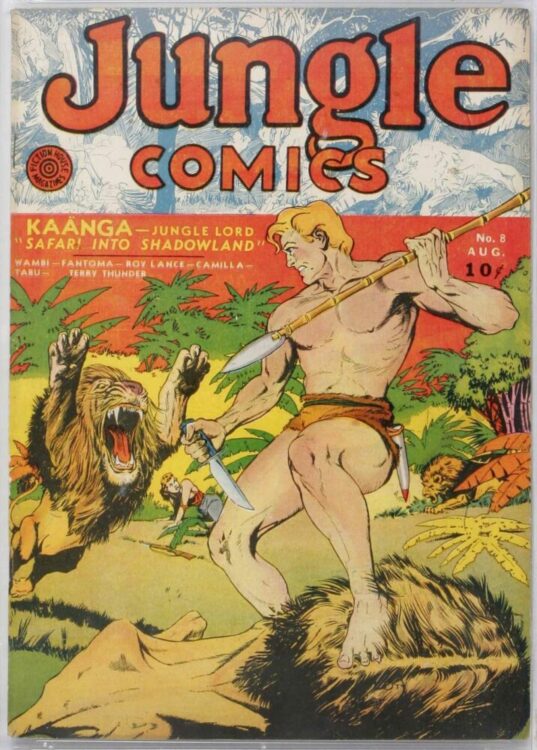
Comic Number 96: Jungle Comics #8 (1940)
During the early 1950s the French government tried to ban Tarzan. In some respects, they succeeded. At least, their attempt led to the title being canceled despite the fact that the ban was never enforced. The call for action against the comic was not directly a result of offense caused by that particular comic but was a part of a larger issue involving the import of American comics into the country. The authorities saw the influence of American media to be harmful to a nation that was trying to rediscover its own identity after the Second World War. The violence, misogyny, and racism that was on display in many American comic books were seen as harmful to the population, especially the younger readers who the comics were aimed at.
It seems ridiculous to us today that this is the reaction that a government would take, especially as the industry has villainised such outspoken anti-comics detractors as Fredrick Wertham and Sterling North, and mocked the 1954 Senate Subcommittee hearings related to comics and juvenile delinquency. But it is important to remember that the lead up to the creation of the Comics Code Authority was not as straightforward as one man’s unhinged attack on a modern pop culture medium. After the Second World War, the American government started to spread American Culture to the rest of the world in an attempt to become the cultural center for the West. This included paying for Jazz concert tours and modern art exhibitions in European countries. It also meant that comics had to be controlled and regulated because millions of American comics were exported legally, and illegally, every year. At the end of the 1940s, crime and horror comics were big business, but they were a poor reflection on American culture. And the worst comics were excessively racist and misogynist.
While comics such as The Haunt of Fear might offend some readers’ sense of taste, steeped as it was in gore and horror, other titles, such as Jungle Comics, are just plain offensive. The African tribesmen are superstitious slaves, the Asian criminals are drawn with exaggerated stereotyped features, and the women are all helpless and require saving or were overly sexualised. You can argue that these comics are of their time, but even in the 1940s and 1950s, this type of comic was seen as anti-progressive and harmful. As millions of copies of these comics traveled around the world, it’s not difficult to see how they could be harmful to American relationships with other countries. It is a testament to the popularity of the medium that the influence of one nation’s comics was high on the agenda of another nation.
I wouldn’t recommend reading Jungle Comics but I would recommend Pulp Empire by Paul S Hirsch. This book takes a detailed look at the comic industry and its relationship with the American government, focusing on the period between 1940 and 1960. Within the pages are some real eye openers about the business of comics and another layer for consideration in regards to the creation of the Comics Code Authority.
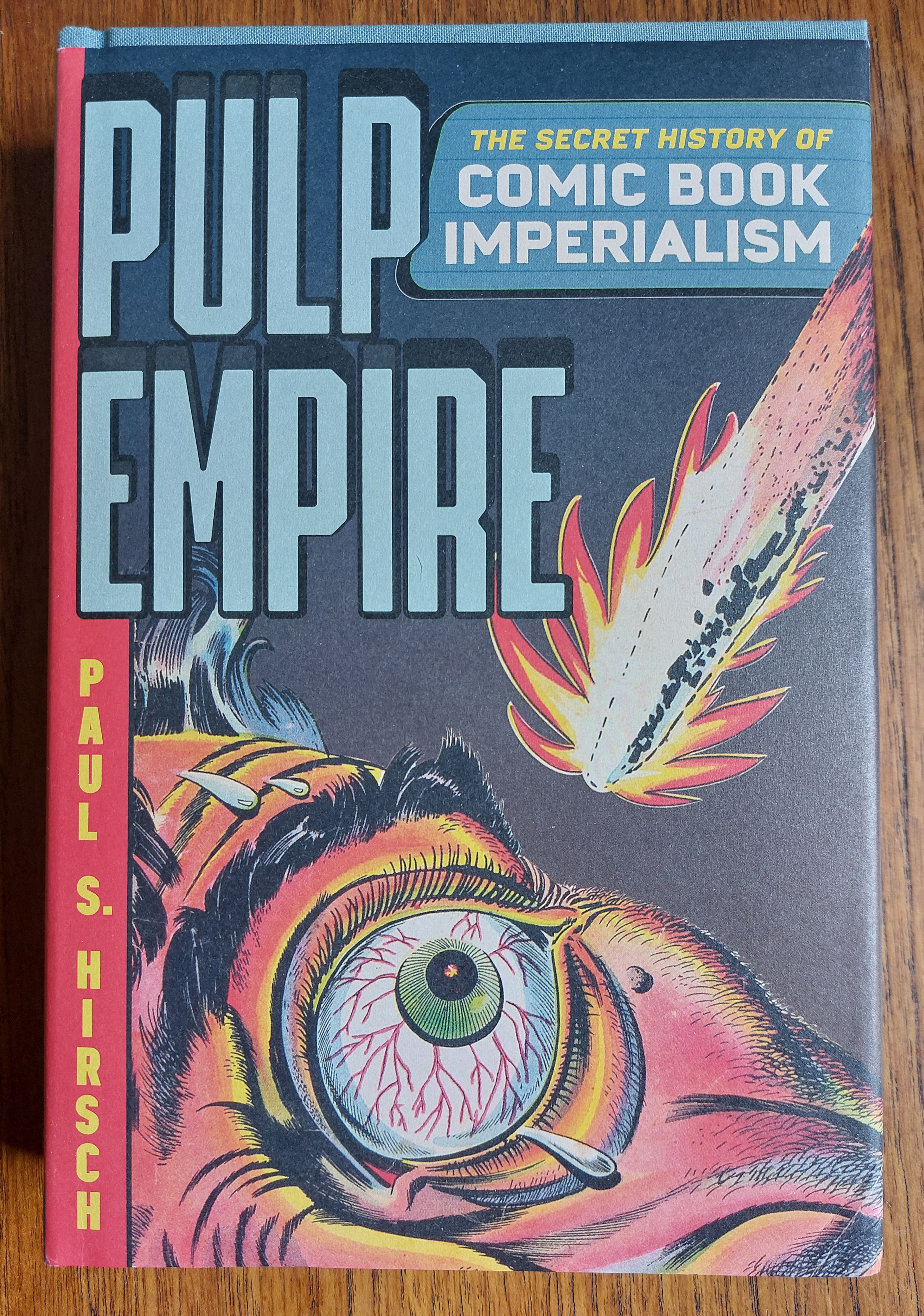
Comic Number 97: Junk Culture #1-2
It somehow feels fitting to read this two part mini-series by Ted McKeever after yesterday’s comic. Published by DC Vertigo in 1997, this quick, grotesque comic tears into modern culture, ripping it open to expose the disturbing entrails. The story follows two manufactured killing machines who have been designed to look like teenage girls and released into a public school. From the very start things go wrong and the girl’s handlers lose control very quickly.
McKeever draws on popular entertainment and music to shine a light on the questionable ethics and moralities behind big brands and celebrity culture. For example, the world famous singer who is making an appearance in the town on the day the girls go AWOL turns out to be a self centered, money making sham, in contrast to the caring, adorable façade he presents to the public. Scenes of excessive violence and references to recognizable pop culture go hand in hand as a killing spree unfolds across the pages.
McKeever’s artwork is expressive with chunky black outlines forming the larger than life characters and the “tour de force of copious junk in modern culture” that occupies the majority of the narrative. In the “On the Ledge” text section at the back of issue one, McKeever describes the miniseries as “a sugar-injected tale of teen hysteria, robotic lust, and the joy of chaos” and he’s not wrong.
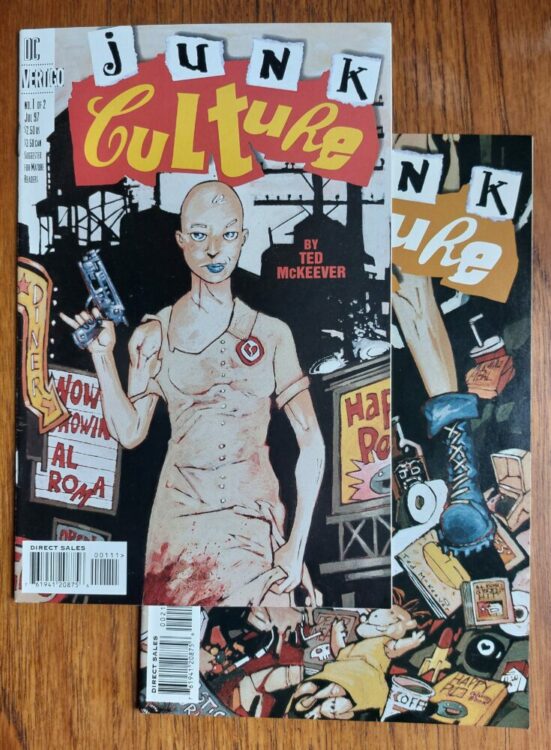
Comic Number 98: Batman: Ghosts
This Legends of the Dark Knight Halloween Special has strong ties with last week’s reading, as it adapts A Christmas Carol for the Batman universe. Jeph Loeb and Tim Sale take the basic haunting premise from Charles Dickens’ original novella and move it to the night before Halloween. Characters from Bruce Wayne’s life take on the role of the spirits with Sale’s amazing artwork bringing the ghosts of the title to life in a spectacular fashion. His rendering of Bruce’s father as the first spirit, the Marley substitute, is haunting and magnificent.
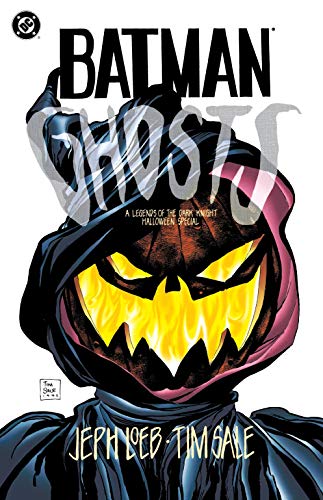
The story is truncated to fit into the limited space, with an opening action sequence taking up more space than is necessary. The Ghost of Halloween Present barely gets any space but the other two spirits are interesting takes on the characters from the novella. It is surprising how much of the novella’s sentiment is brought through in this adaptation and it also allows Loeb and Sale to set up aspects of their own Batman run.
There is clearly a lot to dig out of Ghosts and a close comparison to Dickens’ novella could tell us a lot about Batman, adaptations, and comics in general. But that’s for a future time.

